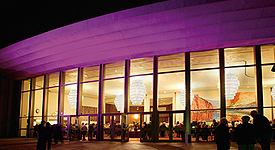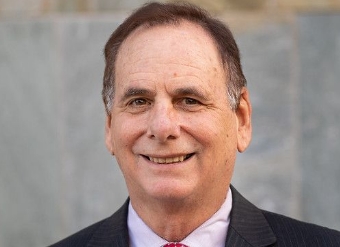The Chandler City Council voted to approve multiple proposed code amendments impacting land use and zoning; property maintenance; sign code; and garbage and refuse. The 30+ code amendments will take effect on March 23, 2024.
These amendments pertain to residential and non-residential uses. All amendments are categorized as either Neighborhoods or Economic Vitality, as to align with the City Council’s Strategic Framework.
Intent
Areas in and around the downtown were given multi-family zoning in 1960 to align with conditions at that time. Many single-family lots located in those areas had a second dwelling, therefore, determined it was multi-family.
Due to the blanket multi-family zoning over those neighborhoods, today single-family homes cannot be built on vacant properties or rebuilt (in case of fire, for example) without obtaining a Use Permit. While those areas are currently single-family neighborhoods, all of those lots are considered legal non-conforming.
Amendment Summary
In order to preserve the existing single-family neighborhoods in the downtown area, the proposed amendment would permit one single-family dwelling by right on multi-family zoned properties not exceeding 12,000 square feet.
Articles VIII, IV, & V
Intent
The current code requires all parking areas on single-family lots to be connected to the required off-street parking spaces (i.e., garage or carport). Staff has seen this create a reoccurring issue for residents who want to add a driveway that leads to a gate on the property's side yard. The current code does not allow parking on the driveway, unless it is connected to the garage. This encourages residents to pave over most of their front yard and creates less desirable curb appeal for neighborhoods.
Amendment Summary
The proposed amendment would eliminate requirements for on-site parking surfaces to be connected to the garage in order to reduce the amount of pavement used and provide more landscaping within residential front yards.
Section 35-1802
Intent
Under the 2020 approved zoning code amendments, guest quarters were permitted on single-family lots. Guest quarters did not permit built-in cooking facilities, (i.e. stove or oven). Residents overwhelmingly request to build ADU's with full kitchens to house an aging parent or adult children.
Guest quarters will still be permitted as defined above. However, cannot be used for activity requiring a license under Chapter 22 (Short Term Rentals).
Amendment Summary
Permit accessory dwelling units on single-family lots meeting the requirements of the accessory building, which one (1) accessory building is permitted per lot, must meet property's building setbacks, maximum height fifteen (15) feet, and must be architecturally integrated with the main residence. The proposal requires one (1) additional uncovered or covered off-street parking space not obstructing any required off-street parking for the main dwelling. In order to not change the character of the single-family neighborhood, ADU's shall not be used as a short term rental vacation property.
Section 35-2204
Intent
Home occupations are currently permitted within residential properties if completely conducted within the dwelling unit, by a member of the family residing therein, and no customers or employees are allowed to come to the dwelling.
Planning and Zoning Commission added language indicating that one customer and one employee can be within the property at a time.
Amendment Summary
The proposed amendment would permit additional uses such as but not limited to personal services, beauty services, photographer, consulting, or therapist allowing one employee and customer appointment to visit during the hours of 8 am to 7 pm. The home occupation can occur within an accessory building or garage if no permanent modifications are made to the garage, thus maintaining the ability to park vehicles. No home occupation shall be permitted that is noxious, offensive, or hazardous by reason of vehicular traffic, generation or emission of noise, vibration, smoke, dust, or other particulate matter, odorous matter, heat, humidity, glare, refuse, radiation, or other objectionable emissions.
Planning and Zoning Commission amended to permit swim lessons if meeting all other criteria, except permitting outdoor activity.
Section 35-2215
Intent
Currently, the zoning code requires a setback of five feet. This setback was originally derived from the Building Code, which has since been amended. The pool setback is dictated by the Building Code.
Amendment Summary
Remove required building setback from Zoning Code as it is already regulated by the Building Code.
Section 35-2205
Intent
An open air ramada is a structure open on the sides and supporting a roof used for the purpose of providing shade. Permitted open air ramadas cannot exceed 150 square feet, maximum height is ten (10) feet, and setback five (5) feet from property line. Currently, there is no limit to the amount of ramadas that can be placed in a rear yard, however, they must be separated by one (1) horizontal foot.
A majority of pre-manufactured ramadas or shade structures exceed maximum square footage permitted per the current code.
Amendment Summary
Proposal to eliminate maximum square footage and limit total square footage of all ramadas to not exceed thirty (30) percent of the rear yard as measured from the back plane of the house; excluding accessory buildings which can occupy thirty (30) percent of the rear yard as well. Total lot coverage for the property shall be met. Maximum height and setbacks for ramadas will remain unchanged. Ramadas may have one solid wall not exceeding seven (7) feet in height used for the purpose of a media wall and shall exclude chimneys.
Without the amendment a property owner can currently cover the entire backyard with ramadas, only separating them by one foot and meeting the five (5) foot setback from property lines. The proposed amendment although removing maximum square footage establishes total area of a rear yard where ramadas can occur.
Section 35-2202.1
Intent
The current code does not require minimum wall height or consider grade differences between adjacent developments. Potential grade differences could create privacy concerns.
Amendment Summary
For new developments abutting residential areas, add a requirement to maintain or provide a minimum six (6) foot high perimeter wall, as measured from the highest grade within five (5) feet of the new wall.
Section 35-2204
Intent
The current code is silent but by policy when new development occurs adjacent to existing development staff avoids permitting double walls due to safety concerns. Developers insist on building a new wall adjacent to an existing perimeter wall to avoid having to work with adjacent property owners. Areas between the walls can range from centimeters to in some cases wide enough to access the area. Safety concerns include children or animals getting stuck between or one wall compromising the other wall.
At the Planning and Zoning Commission Work Session, staff was asked to permit the Zoning Administrator to waive this requirement if an agreement between adjacent parties could not be reached.
Amendment Summary
Double walls or fences shall be prohibited unless waived by the Zoning Administrator.
Section 35-2204
Intent
The zoning code restricts height, location, and size of satellite dishes within different zoning districts. The Federal Communications Commission (FCC) regulates and protects requirements for satellite dishes.
Amendment Summary
Staff proposes to amend the requirements for satellite dishes to protect visual impacts on neighboring properties while concurrently aligning with requirements of the FCC in lieu of removing completely.
Section 35-2208
Intent
The current zoning code does not require designated guest parking spaces within residential development; the amendment is for all residential development excluding apartments.
While not currently in code, staff is implementing a policy that requires developments to provide guest parking spaces evenly distributed throughout the development when on-street parking is not available. By codifying the policy, staff can continue to require adequate guest parking spaces within residential developments while at the same time provide more certainty to developers.
Amendment Summary
If on-street parking is not available, guest parking spaces evenly distributed throughout the development shall occur at the following rate:
- 0.25 spaces per lot
- 0.5 spaces per lot without private driveways
Section 35- 1804(1)
Intent
The current code requires covered and uncovered parking spaces per unit based on bedroom counts. The code is silent on requiring guest parking spaces. Through the public hearing process, developers can request to deviate from the required parking spaces.
Developments that requested a deviation to the parking requirements have since built and city staff now have observed a parking problem. Residents often park outside the development within neighboring streets as either parking is not available or the development charges residents an extra fee to park within the apartment complex.
Amendment Summary
The proposed amendment requires additional parking spaces per unit evenly distributed throughout the development for guest parking. Staff researched other municipalities and found Chandler's parking requirements for multi-family is average. However, Chandler is one of the few cities that currently does not require additional spaces for guests.
Initially staff proposed 0.25 spaces per unit but reduced to 0.2 after discussions with the Arizona Multi-Housing Association. At the Planning and Zoning Commission meeting, Commission stated concerns with multi-family parking overflowing onto public streets and into surrounding neighborhoods. Commission amended to increase required guest parking to 0.25 per unit.
The proposed code amendment would also require all new multi-family developments to assign a certain amount of spaces per unit for the exclusive use of the tenant leasing the unit and may not be made available for use by other tenants or visitors.
One covered space shall be required per efficiency, studio, & 1-bedroom unit.
Two spaces, one covered, shall be required per 2-bedroom or more more bedroom unit.
Section 35-1804(1)
Intent
The requested amendment will provide clarification of the current code. This amendment will allow Neighborhood Preservation to abate any public nuisance or other violations of Chapter 30, thus expanding the ability to use the abatement process.
Amendment Summary
The amendment will replace a violation that is "a hazard to public health and safety" to "any public nuisance or other violations as defined in Chapter 30."
Section 30-14
Intent
The proposed amendment would provide clarification of the current code. The current code reads with an emphasis on a lack of maintenance. This language implies that if the weeds and grass taking over the rock landscape are cut and maintained, the property would be in compliance. This situation creates a blighted and deteriorated appearance in the neighborhood.
Amendment Summary
Add rock landscaping shall be maintained substantially free of grass and weeds.
Section 30-18
Intent
The current code addresses personal property in the right of way. The proposed amendment would clarify the code to specifically address vehicles parked blocking the sidewalk.
Amendment Summary
No person shall allow, park, or permit to be parked, any vehicle on any private property when such vehicle overhangs into a public sidewalk, street, or otherwise interferes with the free flow of pedestrian or vehicle traffic.
Section 30-19(J)
Intent
Chapter 30 currently does not have a code to address light trespassing on to another property.
Amendment Summary
No person shall cause, allow, or permit any exterior lighting rays to be directed off the property upon which the lighting is located on any abutting or adjacent public or private property.
Section 30-20
Intent
The proposed code amendment is required to align with current practices. If a neighbor wants to convert from alley refuse pickup to curbside, a neighborhood may vote for the change.
Amendment Summary
Amend the word "wish" to "vote."
Section 44-4.5
Intent
Encourage developers to invest in older areas of the City, which today may require PAD and/or PDP amendments. The 8-month (average) process cannot be reduced without infringing on critical components such as staff review, neighborhood outreach or statutory notification periods for public hearings.
In order to facilitate infill and redevelopment in older areas of Chandler, staff is proposing the ability to administratively review and approve waivers to building setbacks if the proposed design exceeds the intent of commercial design standards and the precedence for high-quality design in lieu of the public hearing process for commercial and industrial properties.
The amendment would encourage developers to provide higher quality designs in lieu of going through the 8-month public hearing process.
Amendment Summary
Criteria are identified within five subsections to encourage a high quality of design by providing but not limited to a variety of material, increased landscaping, activation of street frontage, providing usable spaces within the areas encroaching into front yard setbacks, innovative design ideas, maintenance of parking and on-site circulation, and maintaining required setbacks and buffers from adjacent residential. If all criteria are met, the Zoning Administrator may reduce a front yard setback by 25 feet along arterial streets and 15 feet along a collector street. The reduction identified is half of the required setback. Only properties located within the Infill Incentive District are eligible if meeting all the criteria established.
Sections 35-1203, 35-1503, 35-1703, and 35-1902.4
Intent
Double drive-thru lanes have become very common in recent years. The zoning code requires 150 feet of queuing from start of queuing lane to the pick-up window and also providing a minimum of six (6) vehicles from order box to the start of the queuing lane for high turnover users. Businesses often propose to divide the required queuing length between two lanes. However, this could create traffic circulation issues when businesses close one of the lanes and causes queuing to spill onto adjacent parcels or streets.
Amendment Summary
The proposed amendment would require total queuing to occur within one lane and any additional lanes would be extra, but not be counted towards the requirement.
The amendment would also replace six (6) vehicles with 120 feet to avoid unclear dimensions for developers.
Section 35-1902.8(c)
Intent
Staff has seen a heightened request for more free-standing pads within larger developments due to consumer trends and the market. In order to accommodate desired development within the city, this change will administratively allow more than one free-standing pad per arterial street if proposed design exceeds the intent of commercial design standards and the precedence for high-quality design in lieu of the public hearing process. The intent of the following standard is to encourage creative and innovative design techniques, quality and merit administratively.
Amendment Summary
In order to accommodate, encourage, and promote infill development or redevelopment, the Zoning Administrator may approve more than two free-standing pads per development after having made a finding that such deviation, on balance, will result in environmental quality superior to that otherwise attainable without such deviation.
Criteria established requiring high quality of design, design of site, and ensuring all traffic circulations remains on-site.
Planning and Zoning Commission added, "No more than one high turnover user per street frontage" to prohibit multiple high turnover drive-throughs by right.
Section 35-1902.8(c)
Intent
Businesses providing pick-up windows for pre-order or online orders only request a shorter queuing lane as orders are prepared prior to the customer arriving on-site and customers are given a time for pick-up. The current code does not differentiate between online orders or onsite orders and requires 150 feet for all queuing lanes.
Planning and Zoning Commission recommended more queuing during the work session meeting. The request has been increased from 40 feet to 60 feet.
Amendment Summary
The proposed amendment would require a minimum of sixty (60) feet of queuing from start of queuing lane to pick-up window for pick-up windows used for pre-orders. Menu boards would be prohibited.
Section 35-1902.8(c)
Intent
Staff has seen multiple requests for shipping containers to be used for development. The current code prohibits the use of metal buildings if seen from arterial streets. The intent of the current code was to prohibit pre-manufactured metal buildings.
Amendment Summary
The proposed amendment would permit shipping containers if designed creatively with additional material for both residential and non-residential development.
Section 35-1902.5(d)
Intent
A Mid-Rise Overlay (MRO) is required for buildings exceeding forty-five (45) feet in height and processed through a rezoning. MRO was intended to regulate buildings five-stories or taller. The issue is that 3 and 4-story buildings are frequently surpassing MRO heights because of increases in height between floors and of roof-mounted mechanical equipment. The intent is to allow 3 to 4-story buildings to increase the height of parapets to completely screen all roof-mounted equipment without having to obtain a MRO.
Amendment Summary
Increase requirement for Mid-Rise Development from forty-five (45) feet to fifty-five (55) feet to accommodate the screening of large roof-mounted equipment.
Section 35-200
Intent
The current code requires all roof-mounted equipment to be completely screened from all views. For new development, the preference is to screen equipment by top of parapet. If a secondary screening method is used to screen equipment on an existing building, material and massing needs to be architecturally integrated with the building's design to avoid a box around a box.
Staff research reveals other cities require complete screening as viewed from across the street. The proposed code amendment is to not lessen screening requirements but to allow for flexibility for aging industrial business parks or situations where screening can be waived.
City Council added language to ensure screening occurred adjacent to residential development.
Amendment Summary
In order to accommodate, third generation users of aging industrial buildings within larger business parks not seen from arterial roads, the proposed amendment would allow the Zoning Administrator to waive roof-mounted screening.
The proposed amendment also allows the Zoning Administrator to reduce or waive requirements to screen roof-mounted equipment on buildings fifty-five (55) feet or taller, if located as to not be visible.
As proposed, the code would continue to require all equipment to be screened if the development is adjacent to residential or visible from an arterial street. No changes to commercial development.
Section 35-1902.5(c)
Intent
Per the Sign Code, temporary banners shall not be displayed for more than thirty (30) days within each six (6) month period. Property owners have asked to display "For Lease" or "Space Available" banners as long as the suite is unoccupied.
Amendment Summary
The proposed amendment allows 'space available' or 'for lease' banners for nonresidential uses to remain over unoccupied spaces for one (1) year. A permit is required and shall be renewed yearly to assist in maintenance of the temporary signs.
Section 39-10.3
Intent
The Sign Code is currently silent regarding murals. The concern is deciphering murals as either art or signage. Murals with associated text can be considered signage.
Amendment Summary
The proposed amendment clearly distinguishes signage from murals by adding definition and clarifying that images depicting commercial messages are signs. Murals consisting of no commercial message, would be allowed by right.
Staff would provide a cursory review to ensure no commercial messages were depicted within the proposed murals.
Section 39-3
Intent
The current code only classifies two types of medical regarding uses and parking; hospitals at three (3) spaces per bed and medical, dental offices, and clinics at one (1) space per one hundred and fifty (150) square feet. The medical market has evolved to include several outpatient services, which require different amounts of parking since they do not operate like a general doctor's office serving multiple patients within an hour.
Amendment Summary
The proposed amendment categorizes types of medical uses and associated parking requirements. For specialist medical users or out-patient surgery centers, a parking ratio of one (1) space per two-hundred (200) square feet is the recommended ratio by Urban Land Institute (ULI).
Section 35-1804(3)
Intent
Industrial development has grown exponentially in the past five years. Currently, Chandler has approximately 2.4 million square feet of flex industrial buildings under construction. The current parking ratio for industrial is either:
Manufacturing at one (1) space per one-thousand (1,000) square feet; or
Warehousing requiring one (1) space per five hundred (500) square feet for the first ten thousand (10,000) square feet plus one (1) space/five thousand (5,000) square feet for remaining warehouse. Both uses shall park office at a rate of one (1) per two-hundred and fifty (250) square feet.
Recent flex industrial developments have been attracting users that require more parking due to their mix of office, manufacturing and other similar more intensive uses. As such, staff has been administratively requiring 2 spaces/1,000 sq. ft. on all flex industrial development for at least the last year if the user is not identified.
Amendment Summary
The proposed amendment codify the parking ratio that staff has been administratively requiring; a minimum parking ratio of two (2) parking spaces per one-thousand (1,000) square feet. The proposed ratio would accommodate various industrial users including research and development and all ancillary offices.
Section 35-1804(4)
Intent
Three objectives proposed:
- Reorganize the table to group by common uses; currently the list is sorted in alphabetical order. There are numerous repeated uses. For example "hotels, motels, tourist homes" is listed later in the list as "motels, hotels, tourist homes" and "tourist homes, hotels and motels". Grouping by common land uses will eliminate repeated entries and make it easier for residents and customers to search for uses.
- Update relevant uses to include but not limited to brewery, cloud kitchen, adult day care, and film studios.
- Identify ancillary uses and percentage permitted; Currently, staff has administratively been allowing ten (10) percent of building areas to be ancillary uses. This has been too restrictive for some employers that wish to move into an existing industrial zoning. For this reason, staff is proposing permitting up to 40% ancillary office within industrial properties.
Amendment Summary
See attached draft Table of Permitted Uses
Section 35-2100
Intent
The current code is silent regarding enforcement of Entertainment Use Permit or Use Permit renewal when the time stipulation is due and an application for renewal has been submitted.
Amendment Summary
The proposed amendment would clarify when an application is filed and under the review process, enforcement may be stayed.
Section 35-305
Intent
In 2018, Liquor Use Permits were eliminated and replaced with Entertainment Use Permits to regulate establishments that sold alcohol to the public and had entertainment activity. The exception was that bars would continue to require Use Permits even if they did not plan to have entertainment.
The Arizona Department of Liquor issues two types of bar licenses; Series 6 Bar License and Series 7 Beer and Wine Bar License. Series 7 liquor license are utilized by establishments that do not create negative impacts to surrounding properties.
Examples of such establishments include Game Show Battle Rooms and Pickleball Kingdom. Staff believes the Use Permit requirement for bars was intended for Series 6 Bar licenses, which are the typical bar establishments that are more likely to impact surrounding properties.
Amendment Summary
The proposed amendment would eliminate the requirement for a Use Permit for an establishment operating under a Series 7 Beer and Wine Bar License.
Section 35-200



